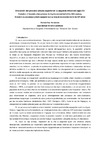Please use this identifier to cite or link to this item:
https://accedacris.ulpgc.es/handle/10553/11941
| DC Field | Value | Language |
|---|---|---|
| dc.contributor.author | Díaz Hernández, Ramón | en_US |
| dc.contributor.author | Parreño Castellano, Juan Manuel | en_US |
| dc.date.accessioned | 2014-06-28T02:30:23Z | - |
| dc.date.accessioned | 2018-03-15T14:27:44Z | - |
| dc.date.available | 2014-06-28T02:30:23Z | - |
| dc.date.available | 2018-03-15T14:27:44Z | - |
| dc.date.issued | 2007 | en_US |
| dc.identifier.issn | 1276-4930 | en_US |
| dc.identifier.other | Dialnet | - |
| dc.identifier.uri | https://accedacris.ulpgc.es/handle/10553/11941 | - |
| dc.description.abstract | Durante la segunda mitad del siglo XX se ha producido en España una profunda transformación de sus estructuras económicas y sociales que han conllevado un fuerte proceso de terciarización y urbanización. Este cambio, similar al que se ha registrado en el entorno europeo, tiene la peculiaridad de que ha sido extremadamente rápido y de que se ha desarrollado bajo dos regímenes políticos distintos: la dictadura franquista y el sistema democrático. Pues bien, en este artículo se pretende caracterizar este proceso, para lo que, tras describir de modo sintético la magnitud y las características del sistema urbano español, se ahonda en las causas que lo explican y se concluye con una exposición de las principales formas de crecimiento territorial que lo ha caracterizado. | en_US |
| dc.description.abstract | During the second half of the XXth century a deep transformation of the economic and social structures have taken place in Spain which have involved a strong process of growth of the tertiary sector and of the urbanization. This process, which has also happened in the European countries, has been extremely rapid in Spain and has been developed under two different political systems: the pro-Franco dictatorship and the democratic system. Well then, in this article we try to characterize this process, for what after describing in a synthetic way the magnitude and the characteristics of the urban Spanish system, we go more deeply into the reasons that explain it and we conclude with an exposition of the principal forms of territorial growth developed. | en_US |
| dc.description.abstract | Pendant la deuxième moitié du xxe siècle, l'Espagne a subi une profonde transformation de ses structures économiques et sociales qui a engendré un processus important de tertiarisation et d'urbanisation. Ce changement, similaire à celui qui s'est produit dans toute l'Europe, a eu la particularité d'avoir été extrèmement rapide et de s'être développé sous deux régimes politiques bien distincts: la dictature franquiste et le système démocratique. Aussi, après avoir décrit de manière synthétique la magnitude et les caractéristiques du système urbain espagnol, cherchera-t-on à mettre en évidence les causes qui le définissent avant de conclure par une exposition des principales formes de développement territorial qui l'ont caractérisé. | en_US |
| dc.format | application/pdf | - |
| dc.language | fra | en_US |
| dc.relation.ispartof | Sud-Ouest Europeen | en_US |
| dc.rights | by-nc-nd | - |
| dc.source | Sud-ouest européen: revue géographique des Pyrénées et du Sud-Ouest [ISSN 1276-4930], n. 23, p. 89-106 | en_US |
| dc.subject | 3329 Planificación urbana | en_US |
| dc.subject | 55 Historia | en_US |
| dc.subject | 540401 Geografía urbana | en_US |
| dc.subject.other | Siglo XX | en_US |
| dc.subject.other | Urbanismo | en_US |
| dc.subject.other | España | en_US |
| dc.title | Évolution du processus urbain espagnol au cours de la seconde moitié du XXe siècle | en_US |
| dc.type | info:eu-repo/semantics/Article | en_US |
| dc.type | Article | en_US |
| dc.identifier.isi | 000258791700009 | - |
| dc.identifier.url | http://dialnet.unirioja.es/servlet/articulo?codigo=3167299 | - |
| dc.identifier.absysnet | 700106 | - |
| dc.description.lastpage | 106 | en_US |
| dc.identifier.issue | 23 | - |
| dc.description.firstpage | 89 | en_US |
| dc.investigacion | Artes y Humanidades | en_US |
| dc.rights.accessrights | info:eu-repo/semantics/openAccess | - |
| dc.type2 | Artículo | en_US |
| dc.contributor.daisngid | 5770216 | - |
| dc.contributor.daisngid | 32075334 | - |
| dc.contributor.authordialnetid | 173219 | - |
| dc.contributor.authordialnetid | 80939 | - |
| dc.identifier.dialnet | 3167299ARTREV | - |
| dc.utils.revision | Sí | en_US |
| dc.contributor.wosstandard | WOS:Hernandez, RD | - |
| dc.contributor.wosstandard | WOS:Castellano, JMP | - |
| dc.date.coverdate | 2007 | en_US |
| dc.identifier.ulpgc | Sí | en_US |
| dc.contributor.buulpgc | BU-HUM | en_US |
| item.fulltext | Con texto completo | - |
| item.grantfulltext | open | - |
| crisitem.author.dept | GIR IATEXT: Sociedades y Espacios Atlánticos | - |
| crisitem.author.dept | IU de Análisis y Aplicaciones Textuales | - |
| crisitem.author.dept | Departamento de Geografía | - |
| crisitem.author.dept | GIR IATEXT: Sociedades y Espacios Atlánticos | - |
| crisitem.author.dept | IU de Análisis y Aplicaciones Textuales | - |
| crisitem.author.dept | Departamento de Geografía | - |
| crisitem.author.orcid | 0000-0002-1082-456X | - |
| crisitem.author.orcid | 0000-0002-1082-456X | - |
| crisitem.author.parentorg | IU de Análisis y Aplicaciones Textuales | - |
| crisitem.author.parentorg | IU de Análisis y Aplicaciones Textuales | - |
| crisitem.author.fullName | Parreño Castellano, Juan Manuel | - |
| crisitem.author.fullName | Parreño Castellano, Juan Manuel | - |
| Appears in Collections: | Artículos | |
Page view(s)
97
checked on May 4, 2024
Download(s)
225
checked on May 4, 2024
Google ScholarTM
Check
Share
Export metadata
Items in accedaCRIS are protected by copyright, with all rights reserved, unless otherwise indicated.
